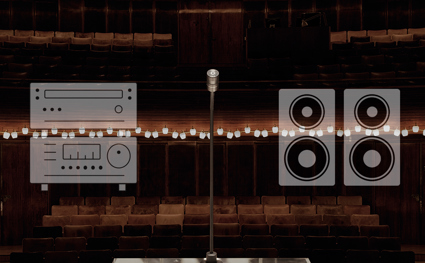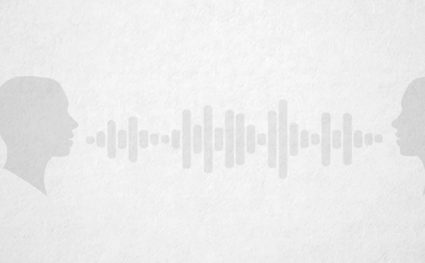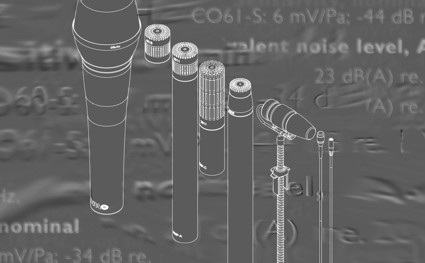10 points on microphones for security
Eyes have blind angles – ears don’t. Sound can carry a lot of “hidden” information not necessarily found in images or video. Voice and language, vehicle characteristics, timing, direction, distance information, etc.

1. Security and sound
In audio forensics, acoustic crime scene analysis is highly appreciated. It provides site-specific information related to the incident in question. Undercover recordings are one of law enforcements’ tools in the fight against crime. Voice biometrics are widely applied for access control. Flight recorders provide unique information that can reveal the cause of aviation incidences. Engine monitoring may ensure in-time maintenance.
To achieve the best results in each of these examples, the microphone must deliver accurate and reliable information.
2. Selecting the right microphone
Microphones are not all the same. The application defines which microphone will provide the best solution for a specific job. The sound pressure levels at the sound scene define the sensitivity and the dynamic range of the microphone. The audio chain to which the microphone is connected defines the requirements for the microphones’ electrical output.
The microphone’s electrical and acoustical features are described by objective specifications as defined by international standards. Besides that comes the physical aspect like size, shape, color – as well as available accessories. Although the acoustical features and specifications are important, the physical features and accessories are also vital for practical application.
3. Sensitivity
Sensitivity is defined by the electrical output of the microphone when exposed to a certain SPL (sound pressure level). The standard sensitivity is measured at 1 Pascal (the same as 94 dB SPL). Sensitivity is typically in the range of 1 mV/Pa (low sensitive microphones) to >50 mV/Pa (very sensitive microphones). If the microphone exhibits too low sensitivity, weak sounds may not be captured. If the microphone exhibits too high sensitivity, the subsequent audio chain can be overdriven and thus the signal distorted. If this happens, the captured sounds might be rendered useless. When capturing distant conversation (>10 meters) high sensitivity may apply (i.e. ≥20 mV/Pa).
4. Frequency response
Frequency response is typically defined by the lowest and the highest frequencies that the microphone responds to. Some microphones (pressure microphones) can capture extremely low frequencies. For many applications, like acoustical crime scene analysis and shot spotting, it is essential to ensure smooth capture of high frequencies >4 kHz.
In some cases, the microphone is designed to emphasize a certain part of the frequency range – for instance to improve speech intelligibility if the microphone is placed in a shadowed position – f. ex. hidden under clothing.
5. Dynamic range
Dynamic range describes the microphone’s ability to capture a wide range of levels from the lowest background noise in a room to the loud sound of shots or explosions. Limits are defined by the self-noise of the microphone and the level at which the distortion is too high to provide a useful signal.
The dynamic range of the real world environment is sometimes wider than that of the recording equipment. Hence, the dynamic range of the microphone must be defined thoroughly so the mic captures the soundscape relevant to the application.
As an example of this, think of a surveillance system installed in an Bank. Basic adjustment lets you hear the most tiny whispering voice. However, when the bank robbers arrives they do not whisper. They shout out loud – and hence the recording is hardly useful due to distorted audio on the tracks.
In many cases, microphone systems for security installations are more or less chosen for whispered voices. However, what is commonly needed, is a system able to handle shouted voices as well.
|
120 dB(A) |
Threshold of pain. Extreme screaming and shouting, explosive sounds, flight engines and the like may occasionally exceed this level. |
|
90-100 dB(A) |
Person shouting at a short distance. |
|
60 dB(A) |
Normal conversational speech. |
|
25 dB(A) |
Typical SPL of a silent bedroom. |
|
0 dB(A) |
Threshold of hearing. (Only very specialized measurement microphone systems can record such low levels.) |
Dynamic range is defined by the related sound pressure level. (The “(A)” indicates weighting of the signal more or less corresponding to our hearing).
For the recording of low levels, use a microphone with low self-noise (<25 dB (A)).

6. Directivity
The directivity of the microphone determines how much off-axis sound the microphone picks up. The directivity is determined by design. A small pressure microphone (a microphone where the sound can only reach the diaphragm from one side) has a perfect omnidirectional characteristic, meaning it accepts sounds from all directions at all frequencies. Pressure-gradient microphones exhibit various degrees of directionality. The actual characteristic may also depend on the placement of the unit. Enhanced directional features can also be obtained by the aid of so-called interference tubes in front of the diaphragm (“shotgun” microphones).
Microphones arranged in arrays can further improve the directionality. However, this also requires some signal processing. Nowadays, smart-phones often contain more than one microphone for improvement of speech over background noise.
Using more than one microphone also provides the possibility of calculating the direction of a sound source, for instance for shot-spotting purposes.
7. Physical environment
Security systems are usually installed to work for many years and it takes robust construction to survive so long in some hostile environments. Hence, microphones must be designed to function well within the relevant application. It is vital that environmental factors like humidity, temperature, barometric pressure, EMC, etc., do not degrade the functionality of the microphone.
8. Placement
When it comes to the placing of microphones, acoustic rules apply. Primarily, the sound must reach the microphone. However, the sound field around the microphone determines the quality of the captured sound. The way the mic is mounted may change both directivity and frequency response.
DPA microphones are easy to work with. Miniature Microphones leave a small footprint and there are many accessories to ensure optimum placement. There are even accessories for the concealment or disguisement of the microphone.
9. Installation
The microphone must be connected to an input, a preamplifier, that can properly handle the signal from the microphone. Also, the preamplifier must deliver a voltage to power the microphone. DPA microphones do not need much current. So battery-driven devices can feed the microphones for extended periods of time.
Installations must be designed to avoid EMC-problems. When “digging” in security or surveillance recordings, nothing but the acoustical sound should be on the tracks. DPA Microphones provides efficient preamplifiers for a variety of solutions – both analog and digital.
10. Examiners’ requirements
For security applications and audio forensics, many kinds of signal processing may apply. To make the signal processing perform at it’s best, the input signals provided must also be the best. Sometimes signals are subtracted from each other; at other times they are multiplied. Errors or deviations in microphones’ performance, like frequency range, phase response, linearity, dynamic range and distortion, automatically causes degradation of the final result.
So: Optimum processing requires optimum microphone performance. This is what DPA microphones are designed for.


